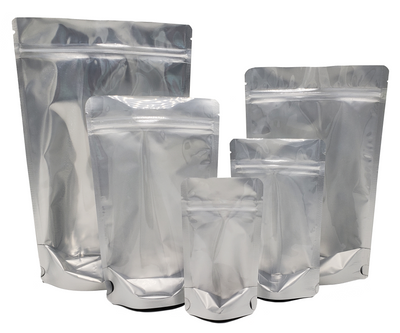Source: Link Testing Instruments Co.,Ltd.
Stand-up pouch, as its name implies, is a packaging bag that can stand on its own without any support and regardless of whether the bag is opened or not. This packaging form has the advantages of improving product quality, enhancing visual effects, light portability, convenient use, freshness preservation, and good sealing performance. And many other advantages, it has been used in the packaging of various liquid, colloidal and semi-solid products such as jelly, edible oil, jam, beverage, laundry detergent, etc. At present, the common stand-up pouches mainly include five types: ordinary stand-up pouches, stand-up pouches with suction nozzles, stand-up pouches with zipper, imitation spout stand-up pouches, and special-shaped stand-up pouches. The material used is mainly aluminum-plastic composite film.

The stand-up pouch made of aluminum-plastic composite film has high stiffness and good barrier properties, but due to the poor flex durability of the aluminum foil layer, the aluminum foil layer is easily damaged under the action of external force bending and bending, forming pinholes. For the aluminum-plastic composite film, the main barrier function is the aluminum foil layer. If there are pinholes in the aluminum foil layer, the barrier property of the entire material will decrease, the product will deteriorate, and even pinholes will be formed throughout the entire material, making the packaging Barrier properties are lost and product leaks. Therefore, by strengthening the detection of the flex durability of the aluminum-plastic composite film, the self-supporting pouch made of it can effectively prevent pinholes at the crease of the bottom of the bag or other parts of the bag body.
Test methods and test instruments
At present, there is no method standard related to the flex durability of flexible plastic packaging in China. This test process is based on the American standard ASTM F392. The test equipment used in this test is the RCT-02 flex durability tester independently developed and produced by Link Testing Instruments Co.,Ltd.
Test principle: This equipment simulates the rubbing effect that the soft plastic packaging material sample may be subjected to during use, and kneads the sample horizontally and vertically. The strength of rubbing can be determined by selecting different kneading modes (different rubbing times). There are two main methods for evaluating the flex durability of the samples. One is to determine the barrier properties of the samples before and after kneading. The samples with good performance have little change in the barrier properties before and after flex durability test, while the samples with poor flex durability are rubbed. The barrier property after kneading is much lower than before kneading; the other is to use dyeing method to analyze the kneaded sample. If there are pinholes running through the whole sample, colored spots will be formed on the white paper. Size comparison, the flex durability of the sample can be obtained.
Test samples and test procedures
Test sample: The test sample used is the aluminum-plastic composite film used in the jam stand-up pouch.
Experimental procedure:
(1) Cut 3 rectangular samples of 200mm × 280mm from the surface of the aluminum-plastic composite film sample for stand-up pouches.
(2) Wrap 4 pieces of samples on the 4 pairs of rotating shafts of the rubbing tester respectively, and fix the samples with fixing clips.
(3) Select the appropriate rubbing mode, and select the C mode in this test.
(4) Start the test. After reaching the set number of kneading times, the equipment will automatically stop and 3 samples will be removed.
(5) Cut out a sample of 150 mm × 200 mm from each of the three samples after kneading.
(6) Take a piece of white paper and lay it flat on the test plate, and then place a sample of 150mm × 200mm on the white paper, apply the prepared turpentine on the surface of the sample repeatedly, and let it stand for 1 minute. , remove the sample and observe whether there are red spots on the white paper and the size and number of the spots.
(7) Repeat (6) until all 4 samples have been tested.
Test Results and Analysis
There are more than 4 spots with diameters ranging from 3 mm to 5 mm on the 3 white papers, which indicates that there are penetrating pinholes on the surface of the sample under the action of C-mode rubbing. The rub resistance of the sample is poor.
The flex durability of the aluminum-plastic composite film used in the production of stand-up pouches is an extremely important performance index. The level of this index value determines the size of the barrier properties of the stand-up pouch after being kneaded by external forces during use. In this test, the RCT-02 flex durability tester was used to knead the test sample in C mode, and the dyeing method was used to verify the pinholes formed on the surface of the sample after rubbing. The test process is simple, the instrument is easy to operate, and the test results are easy to count.
For more details please visit website www.linktesting.org